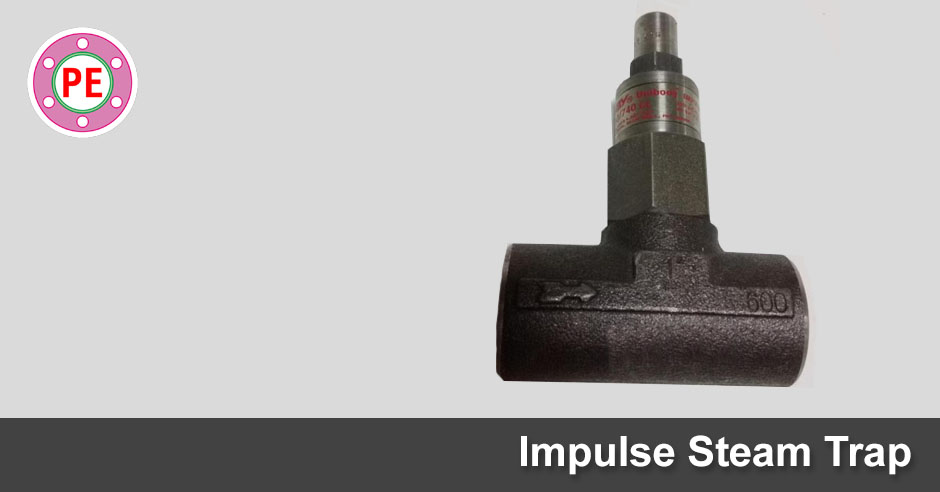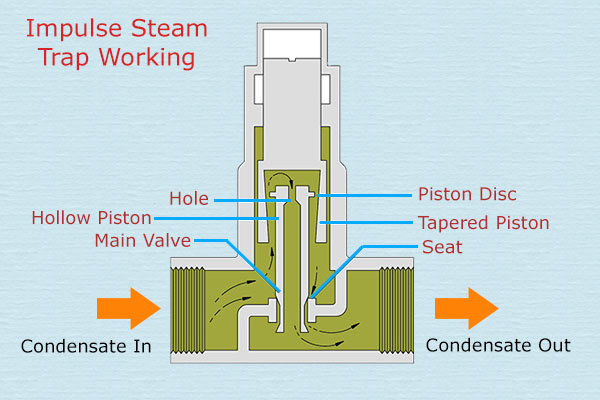This article on Impulse Steam Trap provides information on various aspects of this steam trap such as its operating principle, applications, advantages and disadvantages.

Impulse trap is classified as Kinetic energy operated traps based on its working principle. Impulse traps cannot give a dead tight shutoff and therefore the use of impulse traps is relatively limited as compared to other types available.
Operation of Impulse Steam Trap
- The impulse steam trap consists of a hollow piston with a piston disc working inside a tapered piston which acts as a guide.
- At ‘start-up’ the main valve rests on the seat leaving a passage of flow through the clearance between piston and cylinder and hole at the top of the piston.
- Increasing flow of air and condensate will act on the piston disc and lift the main valve off its seat to give increased flow.
- Some condensate will also flow through the gap between the piston and disc, through E and away to the trap outlet.
- As the condensate approaches steam temperature some of it flashes to steam as it passes through the gap.
- Although this is bled away through hole F it does create an intermediate pressure over the piston, which effectively positions the main valve to meet the load.
- The trap can be adjusted by moving the position of piston (B) relative to the seat, but the trap is affected by significant back pressure.

Advantages of Impulse Steam Trap
- Impulse steam traps have high condensate handling capacity for their size.
- Impulse steam traps work over a wide range of steam pressures without any change in valve size.
- Impulse steam traps can be used on high pressure and super heated steam.
- Impulse steam traps are good at venting air and cannot ‘air-bind’.
Disadvantages of Impulse Steam Trap
- Impulse steam traps cannot give a dead tight shut-off and will blow steam on very light loads.
- Impulse steam traps are easily affected by any dirt which enters the trap body due to the extremely small clearance between the piston and the cylinder.
- Impulse steam traps can pulsate on light load causing noise, water hammer and even mechanical damage to the valve itself.
- Impulse steam traps will not work against a back pressure which exceeds 40% of the inlet pressure.
